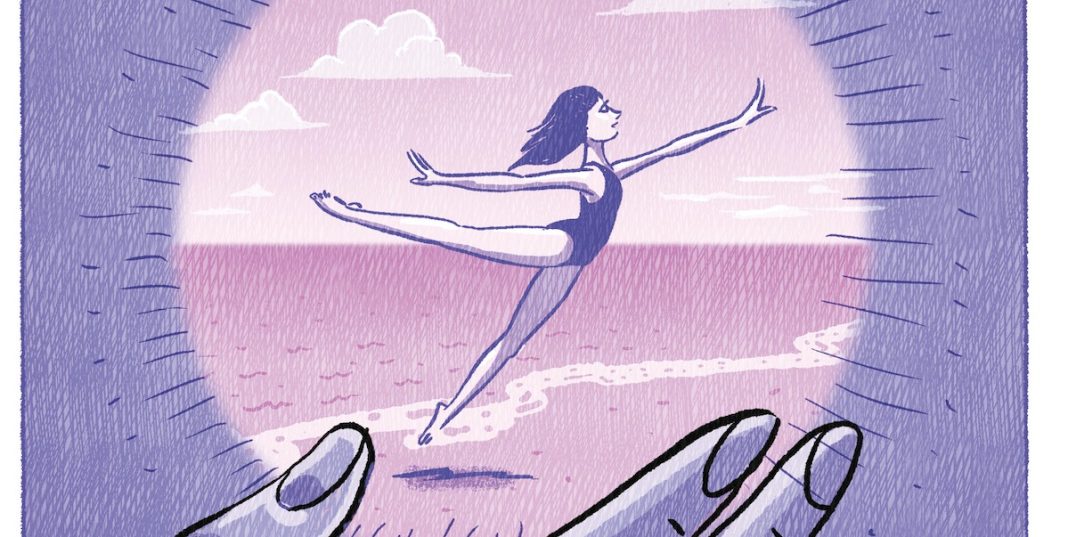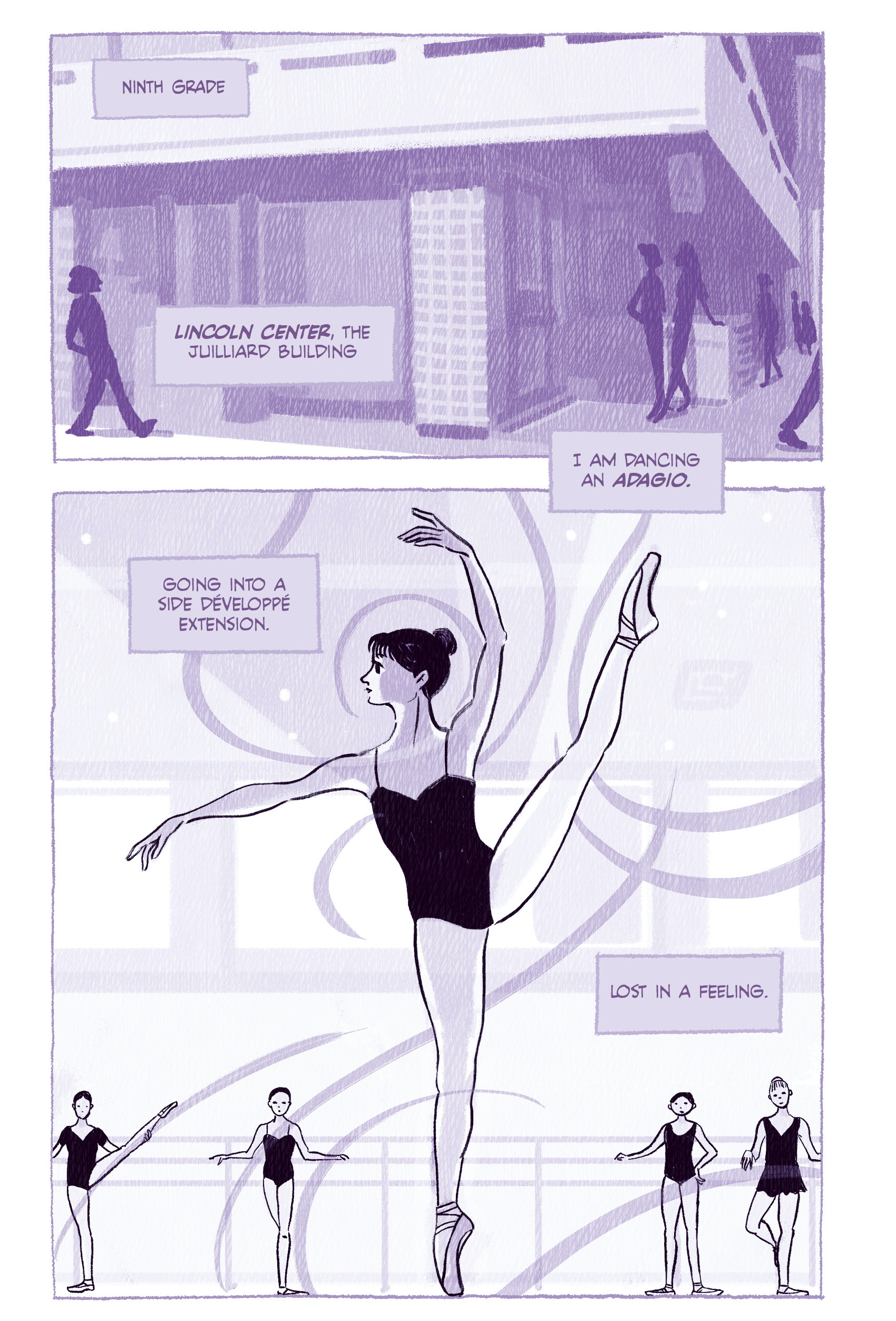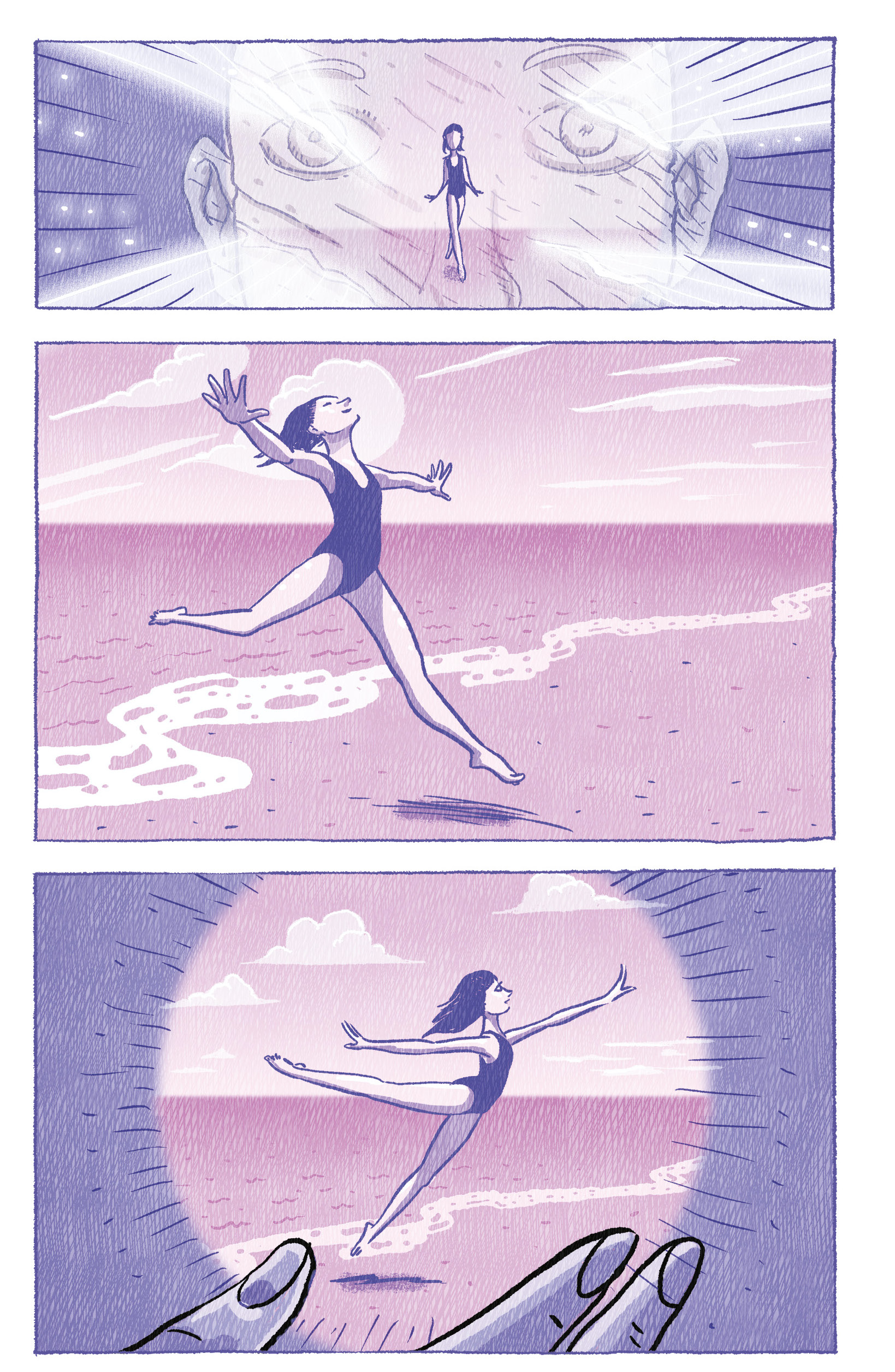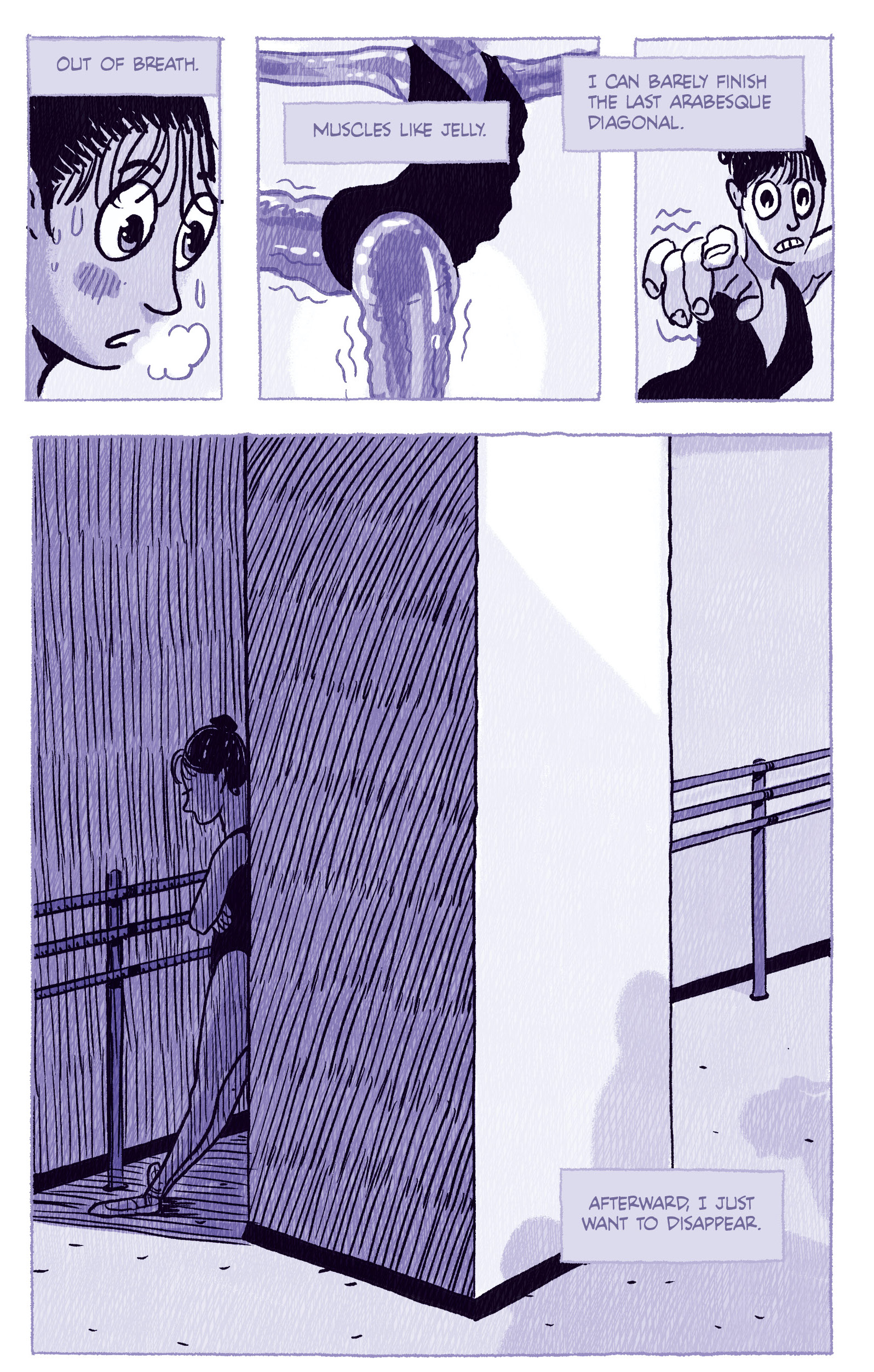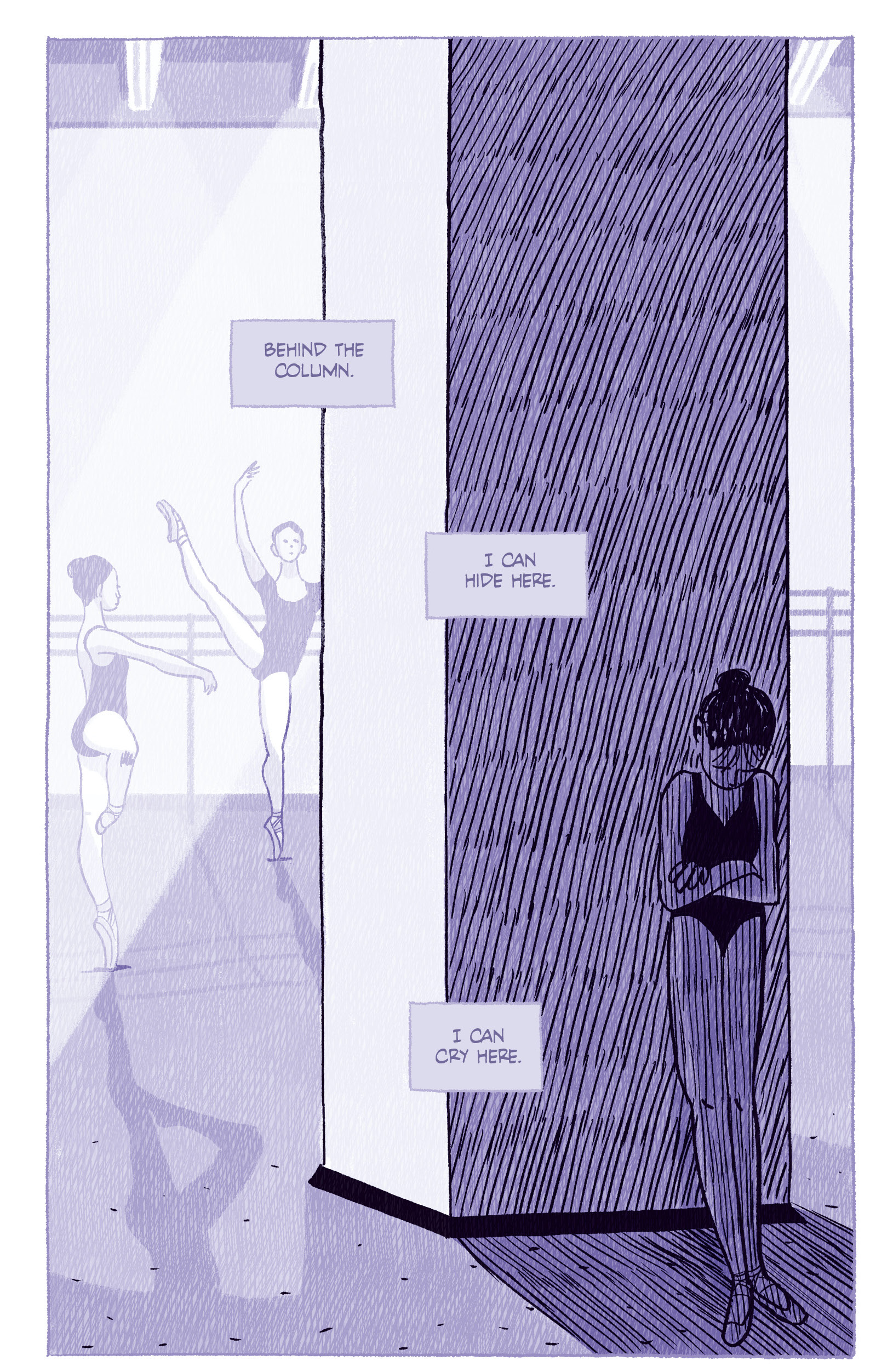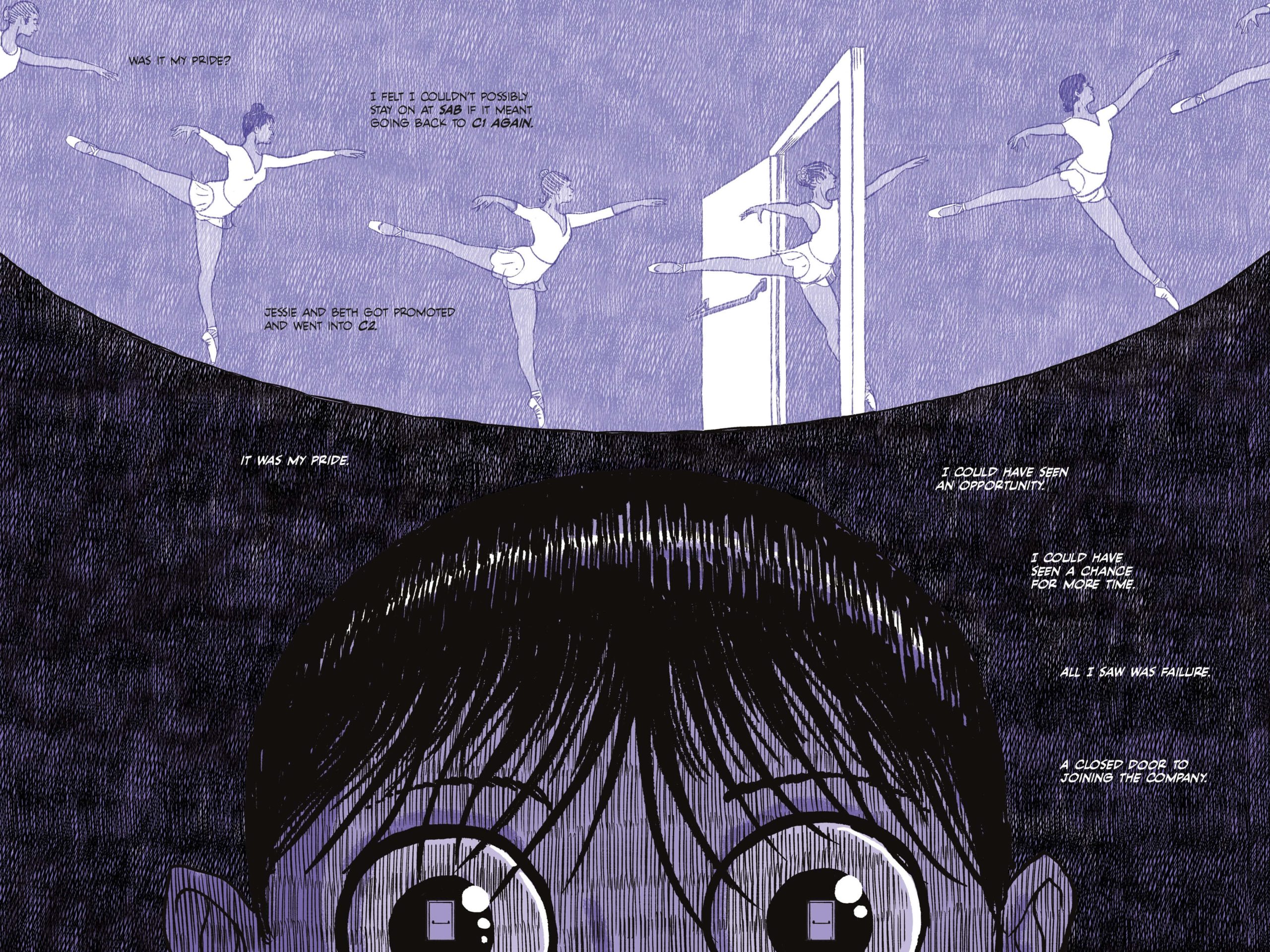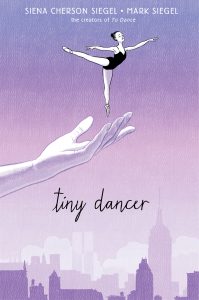
In Tiny Dancer by Siena Cherson Siegel and Mark Siegel, the author reflects on the pressures of being a young dance student at the prestigious School of American Ballet, where she dreams of joining the world-famous New York City Ballet.
The Beat got the chance to catch up with Siena and Mark over email to find out more about what went into faithfully depicting the specific movements of Ballet, how the Elton John song inspired the graphic memoir’s title, and which television comedy does the best job of infusing dance choreography (it’s not what you expect)!
AVERY KAPLAN: How has the dance community reacted to your writing? Have they been largely supportive, or…?
SIENA CHERSON SIEGEL: I sent out our first book To Dance to my contacts from New York City Ballet, American Ballet Theater and a few others, and the response was enthusiastic! It was a great feeling of overall support and encouragement from some of my former friends who have gone on to do great things. One unexpected highlight was receiving a handwritten fax from Maya Plisetskaya—one of my lifelong idols—in Russian! It was a glowing note, and we ended up putting it on the back cover of the book. Plisetskaya was one of the all time greatest prima ballerinas for the Bolshoi ballet, and seeing her perform The Dying Swan on stage in Boston at the age of nine spurred my passion for ballet.
The dancers we heard from really seemed to embrace a comics take on their world. To Dance straddled the comics and picture book formats. Tiny Dancer is in much more of a classic comic format. Mark and I are curious to see how that lands in the dance world.
As for Tiny Dancer, at the time of this interview, it’s too early to know—all we have at this point are a handful of reader reviews on places like GoodReads. Some of these are so heartening. It appears that the story resonates with some people’s own journeys, and their self narrative of success and failure. Which is what we’re hoping for!
KAPLAN: Mark Siegel did an excellent job capturing the details of Balanchine technique. How did you communicate the unique details of the technique through your collaborative process? What went into capturing these details of movement accurately?
MARK SIEGEL: Thank you! The challenge confronting me was how to convey an artform that is all about motion, musicality, speed and timing in static images on a page. There’s anatomy involved of course, and an understanding of ballet positions and the dancer’s body, but where photos and even much illustration falls short is in the dynamic feeling you get when you’re watching a dancer in motion. So I spent some months searching for the right comics approach, trying to reach for both those aspects.
SIENA: I fed Mark tons of reference, footage, and photos. I took him to ballet performances, and every chance I got I pointed out qualities of movement, and specific features of different choreography. I don’t know how many ballerinas at the barre, how many arabesques Mark has had to draw over these last few years—practice, practice, practice really paid off! At first I was correcting ankles and knee caps, and the turnout of a leg, because these are things that, to a dancer’s eye, could be glaring mistakes, even if the lay reader wouldn’t notice. Oftentimes, Mark was on a particular panel and on the spot I would model the step for him. At this point in time, I feel like Mark can draw ballet like no one else, with both accuracy and the feeling of movement. I love the fact he could capture not just how the classroom looked, but how it felt.
KAPLAN: Your second graphic novel explores the injury that halted your career, and other problems that plague young dancers. How can your graphic memoir help young dancers?
SIENA: Over the years, both when I danced, and when I was running school programs at ABT, I met so many young women who were very intent, very serious, and very driven. There’s a great quality for any life in any field there—but there’s also a danger. I do hope that if there’s a vitamin in this book for some of these girls and young women, it’s to take a longer view of their lives, and realize that all goals aren’t meant to be reached by the age of eighteen.
Tenacity and self-sacrifice are necessary for reaching excellence, but there’s a toxic idea that you must push through everything and anything, and that any less is quitting and failing. That’s simply not how life works. Finding balance, taking care of oneself, physically, mentally, emotionally—these things matter absolutely. Hopefully, this is being given more credence in today’s ballet world, and in all high performing pursuits. That’s why what Simone Biles did at the Olympics was so brave and so important, and can have such a meaningful effect on those who would model themselves after her.
If you pursue anything hard and long enough, the qualities you grow will be yours for life—no matter what paths your life takes, or whether it turns into a career or not.
KAPLAN: I was particularly excited to see the lyrics from Elton John’s “Tiny Dancer” carry over into your second graphic novel. Can you tell me about how the song has inspired you?
SIENA: I love the song, always have. It still transports me whenever I hear it. But when I was young, I was certain that it was me. Not just that: this was predicting my life, my future! I was always dancing in the sand, I was going to marry a music man, I was going to live in L.A. Those pretty eyes were my pretty eyes. It was a fantasy script for my future. And that might be at the heart of this book: life doesn’t follow such scripts. And in the end, it’s much richer for it.
KAPLAN: Your memoir, To Dance, ends with Suzanne Farrell’s farewell performance to George “Mr. B” Balanchine. How was returning to that moment for your graphic novel?
SIENA: That’s one of my absolute favorite sequences in To Dance. George Balanchine’s death really marked the end of an era in the ballet world. Everyone felt it at the time. The way Mark drew it makes me feel all the sadness and beauty of watching that final performance. I think it also brings alive really well the gigantic feeling of loss Mr. B’s death caused.
KAPLAN: Since Harlequinade appears in To Dance, I must ask a fun question related to Mikhail Baryshnikov. What comedy program starring a former ballerina do you prefer: Dickinson or Caroline in the City?
SIENA: I confess I haven’t seen either show! And ballerinas in film and TV are such a mixed bag . . .! But I love the infusion of choreography in The Marvelous Mrs. Maisel, created by a former ballet dancer. It has such verve, such joy.
Tiny Dancer is available at your local bookstore and/or public library now.


